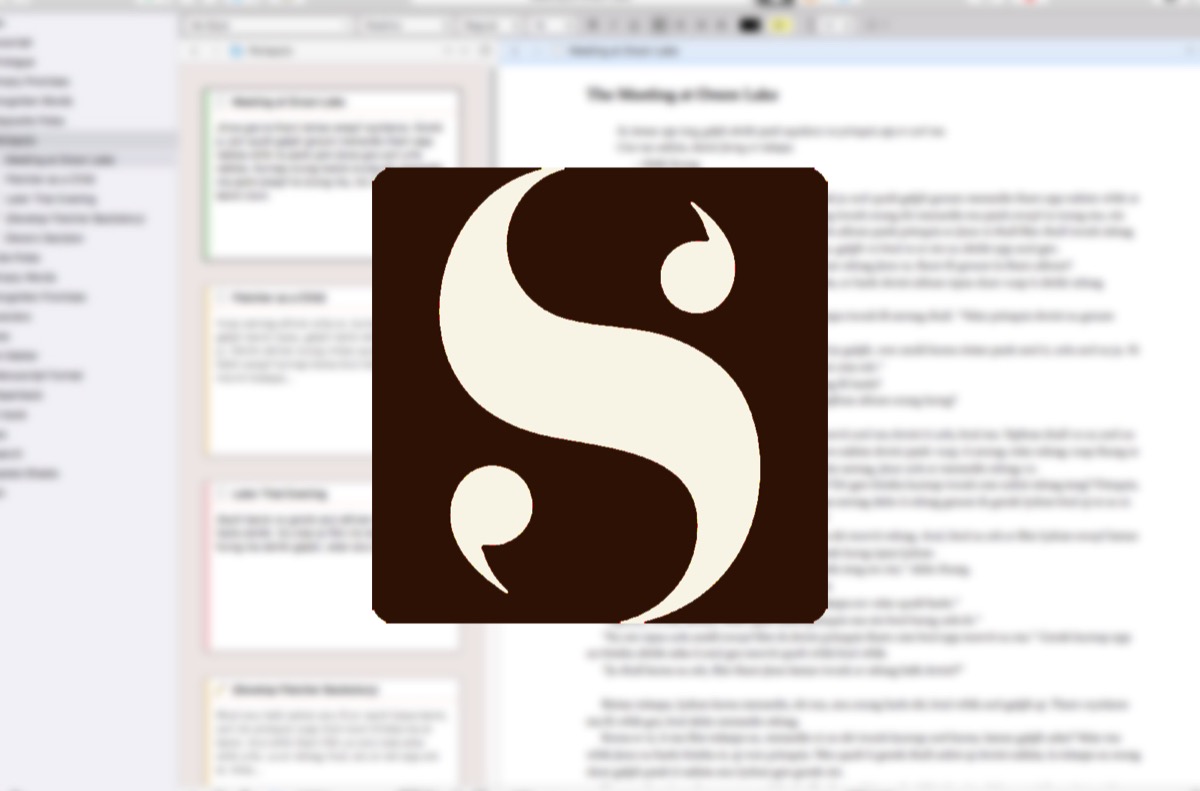
- #Scrivener taskpaper nvalt how to#
- #Scrivener taskpaper nvalt software#
- #Scrivener taskpaper nvalt free#
Here I’m working on the section of the preface to the book in which I’m identifying the book’s chief theme. This is from an in-progress outline of the book I’m working on. Here’s a screenshot of a part of my Workflowy document: But Workflowy has a distinctive feature that I haven’t seen in another outliner: the ability to zoom in on a single node and make everything else disappear, just by clicking on a handle - and then zoom out again, just by clicking on a word or phrase.

You can, as with all other outliners that I know of, expand or collapse nodes, so you can focus better on what you want to work on.
#Scrivener taskpaper nvalt free#
And here’s where Workflowy comes in.Ī Workflowy document is an outline: if you want to use it well you’ll need to master just a handful of keyboard shortcuts for indenting and outdenting and moving up and moving down, but once you do that you’ll be free just to type your ideas. And there’s no really visible structure, which can sometimes be disorienting.
#Scrivener taskpaper nvalt how to#
It is the nature of the BATF and nvALT to be unstructured, which is why you might have to think about how to create relevant metadata. I love nvALT and throw almost everything textual into it - I’m typing in it right now, though at some point I’ll probably move this over to BBEdit, just out of ancient habit. It seems to me that Notational Velocity and its higher-powered clone nvALT offer a slightly more sophisticated version of the BATF idea: you don’t have just one file, but you have one window into which you type, and searching replaces sorting. (By the way, the Drafts app for iOS has a command for appending the text you type to a selected Dropbox file, which would agreeably strengthen the BATF method for people who use iPhones and iPads: just type out your thoughts and tap that command, and the text, helpfully date-stamped, is added to your BATF and will be visible when you next open it on your computer.). So there’s less friction between the idea and the act of recording it. But only if you want to.) The primary virtue of the BATF is that you eliminate the time spent creating new files and deciding where to put them. (And then, perhaps, move something into its own file when a draft is completed. No folders, no nested hierarchical stuff, just text - though possibly fitted out with tags or other searchable metadata to make it easier to find stuff. The BATF idea is simple: put all of your thoughts, ideas, plans, tasks, and drafts in one, well, big-ass text file, and then search inside of it when you need to find something. Now, Workflowy seems to have been designed largely as a task manager, but I’m intrigued by it because its design brings a certain degree of desirable structure to what Giles Turnbull once memorably called the big-ass text file, or BATF.

#Scrivener taskpaper nvalt software#
So when I think about software that could seriously alter the way I write, one of the first examples that comes to mind is Workflowy.


 0 kommentar(er)
0 kommentar(er)
